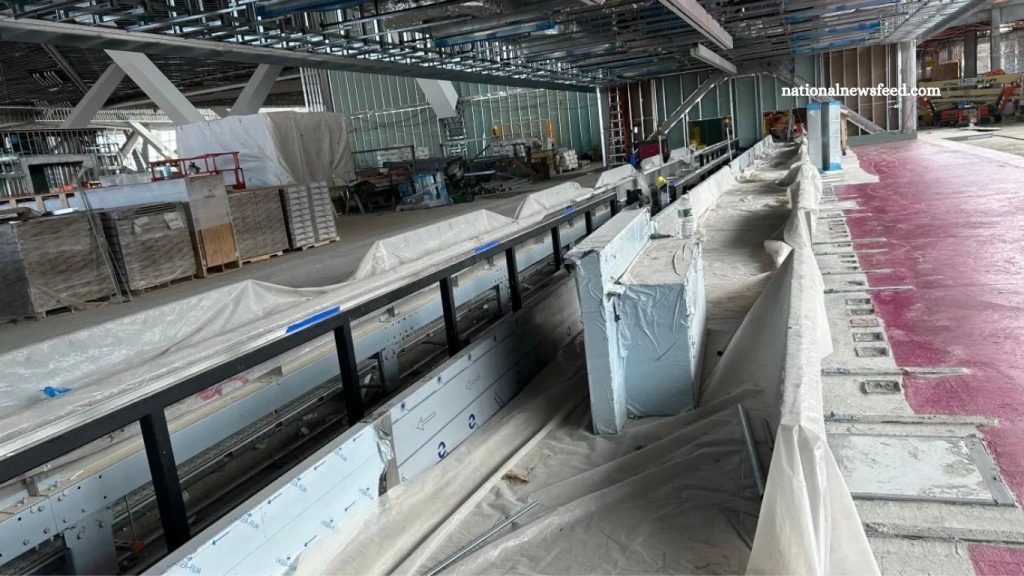The future of international air travel at New York City’s busiest airport is rising fast. Construction of the $9.5 billion Terminal 1 at John F. Kennedy International Airport (JFK) is well underway, marking a key milestone in the airport’s ambitious modernization. While far from complete, the facility has become weathertight, revealing the form of what will soon become JFK’s largest terminal — and one of the most advanced in the nation.
First Phase Set for 2026 Launch
The first phase of Terminal 1 is slated to open by mid-2026, just in time for the FIFA World Cup, with nearby MetLife Stadium in New Jersey scheduled to host several matches. Once complete, the new terminal will replace the current Terminal 1, which dates back to 1998, bringing a state-of-the-art facility designed exclusively for international travelers.
Upon opening, the terminal will feature 14 wide-body gates, a sprawling departures and arrivals hall, and a streamlined passenger experience — all within a space roughly the size of LaGuardia’s two new terminals combined. When fully completed by 2030, Terminal 1 will boast 23 gates, including 22 wide-body gates and one for narrow-body aircraft, with the capacity to serve up to 23 million passengers annually.
Read More: Black Entrepreneurs Gather in Martha’s Vineyard Each August for Business and Community
Designed for Global Travelers
At the heart of Terminal 1’s vision is the international traveler. From architectural details to security flows, the design prioritizes the needs of those flying long-haul routes. Airlines such as Turkish Airlines, Air New Zealand, Etihad Airways, Air China, and China Airlines of Taiwan will operate from the terminal, welcoming millions of passengers each year from around the world.
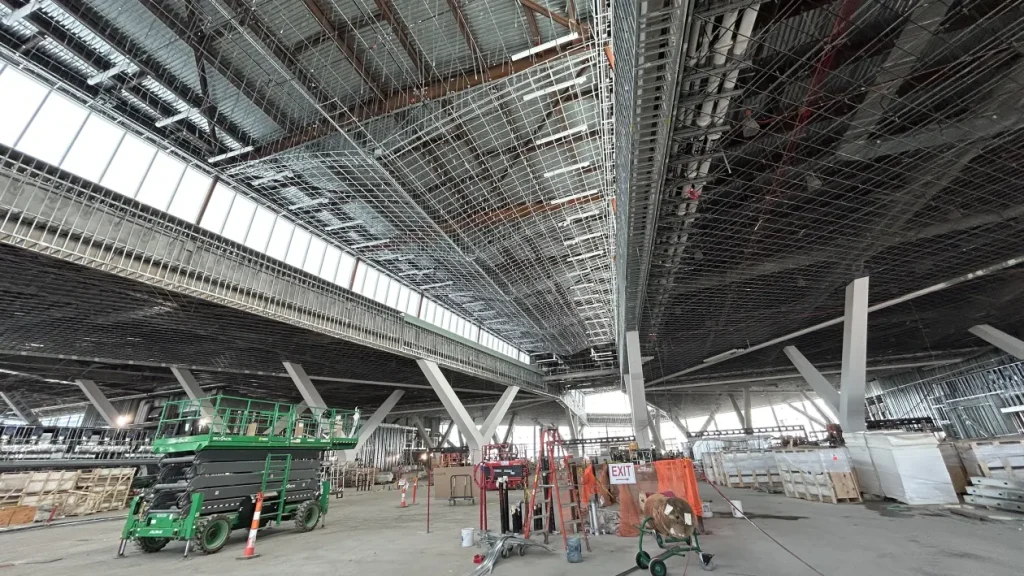
“From the very first pen to paper, we had the international customer in mind,” said Jennifer Aument, CEO of the New Terminal One development group, during a recent media tour. Reporters, including those from CNBC, were given a rare inside look in early July — likely among the last hardhat tours before the opening.
A Glimpse Inside: Light, Efficiency, and Innovation
Terminal 1’s three-level layout is both visually striking and operationally efficient. The departures hall, security checkpoints, and customs processing will all be located on the same floor, eliminating the need for basement customs queues. A wall of angled glass windows will flood the terminal with natural light, creating an open, modern atmosphere designed to enhance the travel experience.
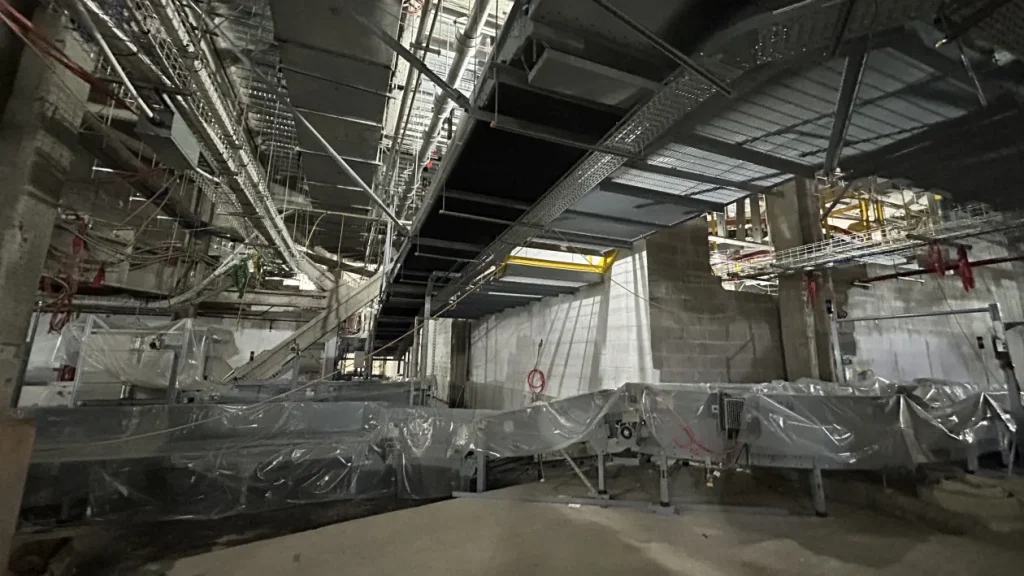
Architectural firm Gensler led the design, drawing inspiration from the graceful form of a butterfly. The terminal’s central spine divides the structure, while the wings extend outward to house the gates, retail, and lounge spaces.
The AirTrain, JFK’s internal rail system, already runs through the construction site and will connect directly to Terminal 1 upon completion, linking travelers with the rest of the airport and nearby transit options.
Next-Generation Infrastructure and Sustainability
Terminal 1 isn’t just about aesthetics — it’s also engineered for resilience and sustainability. The new facility will operate on its own dedicated microgrid, featuring rooftop solar panels to ensure continuous power even during outages. This energy self-sufficiency aims to set a new standard for airport infrastructure across the U.S.
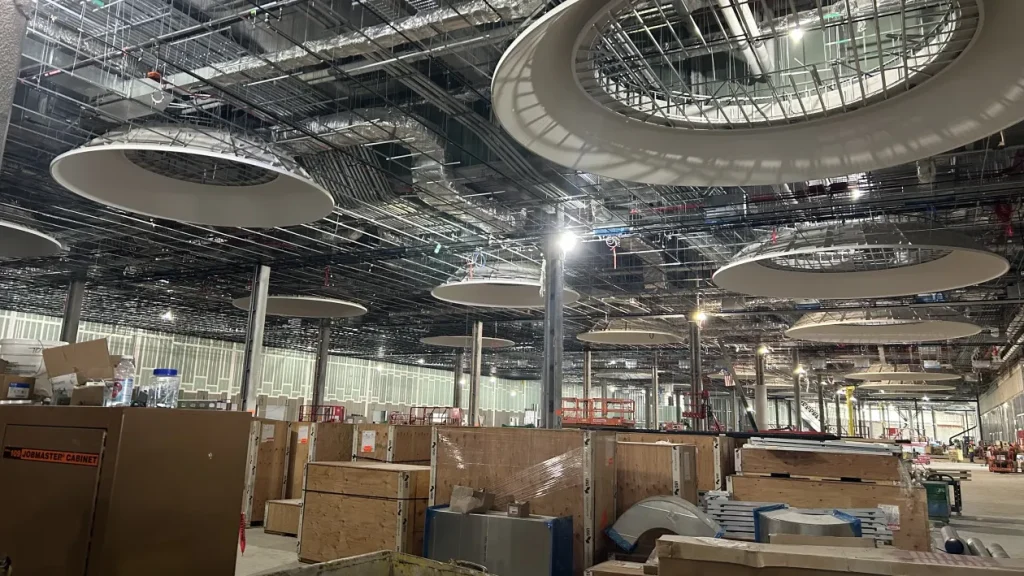
Baggage handling is also getting a major upgrade. Winding conveyor systems are already installed, with ticketing counters and future check-in areas clearly taking shape. The terminal will support seamless luggage processing for wide-body aircraft, significantly improving efficiency for international carriers.
Terminal 1 Anchors a $19 Billion Airport Overhaul
This project is a centerpiece of the Port Authority of New York and New Jersey’s $19 billion overhaul of JFK Airport. Alongside Terminal 1, Terminal 6 is also under development on the site of the soon-to-be-demolished Terminal 7, currently used by Alaska Airlines and Aer Lingus. Terminal 6 is expected to open its first gates in 2026.
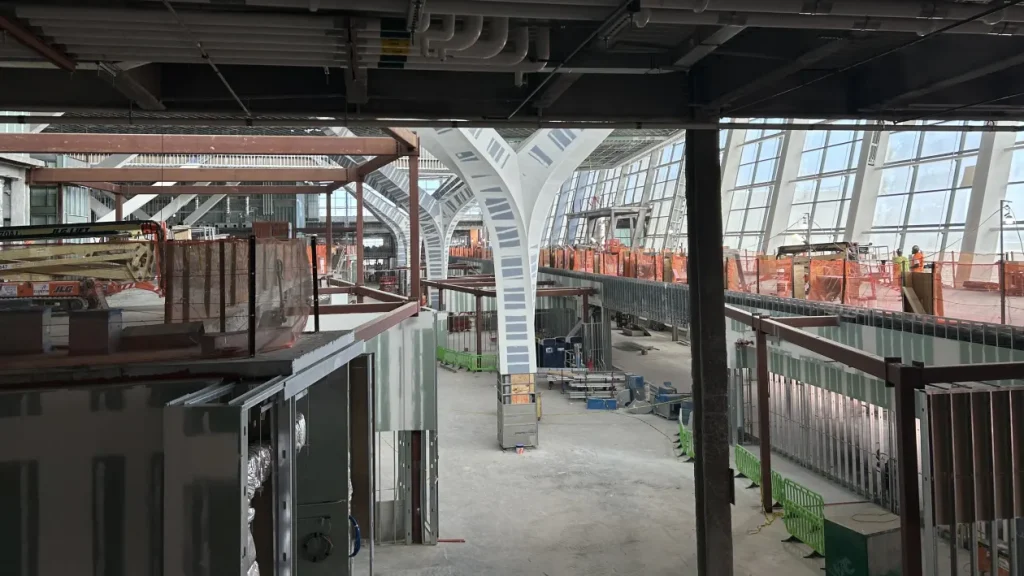
Compared to LaGuardia’s $8 billion transformation, JFK’s broader revamp reflects the scale and complexity of serving one of the world’s most important international gateways. These massive investments are part of a national trend: a 2024 report by the Airport Council International–North America estimated that U.S. airports need more than $173.9 billion in infrastructure upgrades through 2029.
“These investments – averaging nearly $35 billion annually – are essential to accommodate airlines and passengers, improve operational efficiency, elevate service quality and customer experience, and fulfill airport resiliency needs,” the report stated.
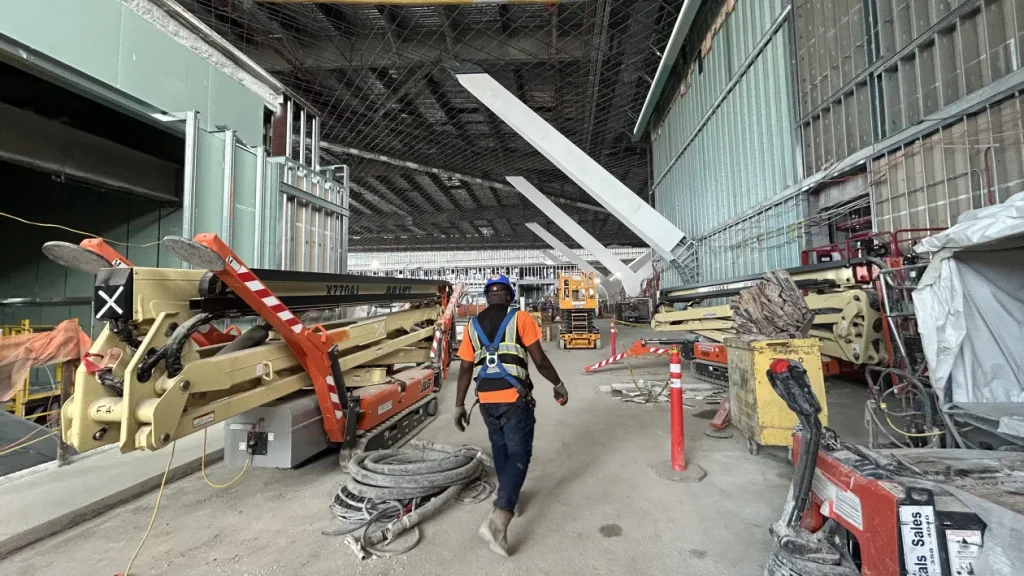
High-End Amenities and Retail Experiences
When fully open, Terminal 1 will offer more than 300,000 square feet of amenities — including dining, retail, and recreational areas. Over 180,000 square feet will be dedicated to dining and shopping, creating a world-class experience for travelers. The terminal will also introduce the U.S.’s only “cash-and-carry” duty-free shopping model, allowing passengers to immediately take their purchases instead of retrieving them at the gate.
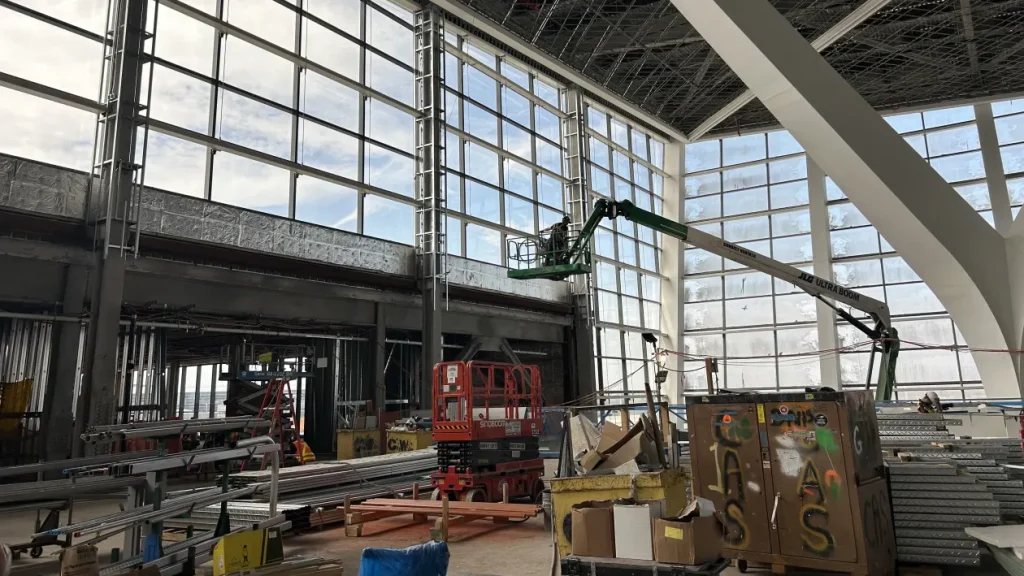
Expect premium lounges, immersive retail concepts, and an environment that emphasizes comfort and convenience for long-haul flyers. Developers are working to strike a balance between speed, aesthetics, and functionality — ensuring the terminal operates as smoothly as it looks.
Frequently Asked Questions
What is the JFK Terminal 1 project?
The JFK Terminal 1 project is a $9.5 billion redevelopment initiative aimed at building a new, world-class international terminal at John F. Kennedy International Airport. It is part of a larger $19 billion overhaul of JFK by the Port Authority of New York and New Jersey.
When will the new Terminal 1 open?
The first phase of the terminal is expected to open in mid-2026, with full completion — including all 23 gates and retail space — scheduled for 2030.
Will the AirTrain serve the new terminal?
Yes, the existing AirTrain system will stop directly at Terminal 1, connecting passengers to other terminals, parking lots, and public transit stations in Queens.
Is Terminal 1 replacing an existing terminal?
Yes. It will replace the current Terminal 1, originally opened in 1998, and expand into the area currently occupied by Terminal 7, which will be demolished.
How will construction affect current airport operations?
While construction continues, airlines are shifting terminals across JFK. The Port Authority and developers are coordinating efforts to minimize disruptions to passengers during the transition.
Conclusion
The $9.5 billion transformation of JFK Airport’s Terminal 1 marks a bold step into the future of international air travel. With its thoughtful design, cutting-edge sustainability features, and commitment to passenger comfort, the new terminal is set to redefine the airport experience for millions of travelers. As one of the most significant infrastructure investments in the U.S., Terminal 1 not only enhances JFK’s capacity and efficiency but also positions New York City as a leading global gateway.

